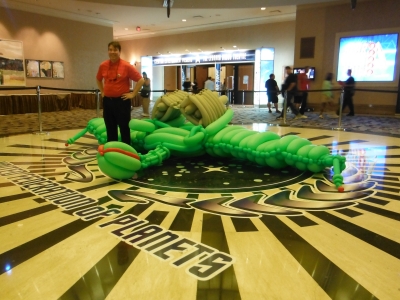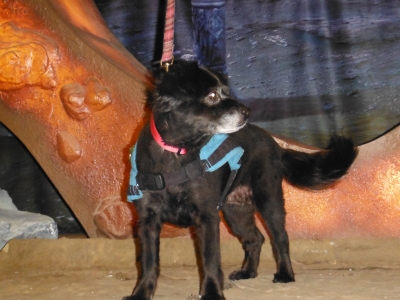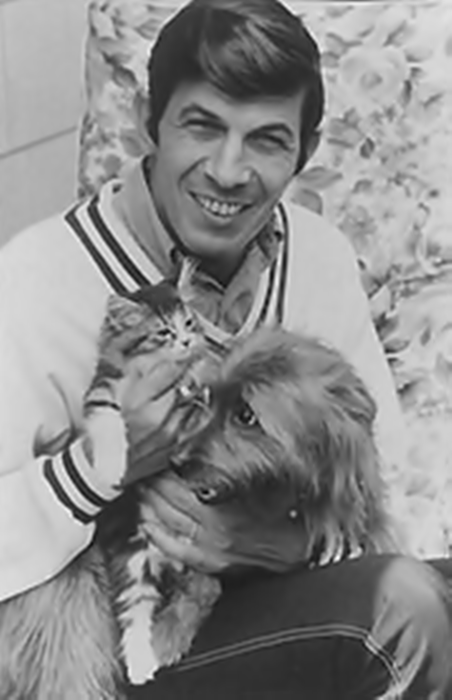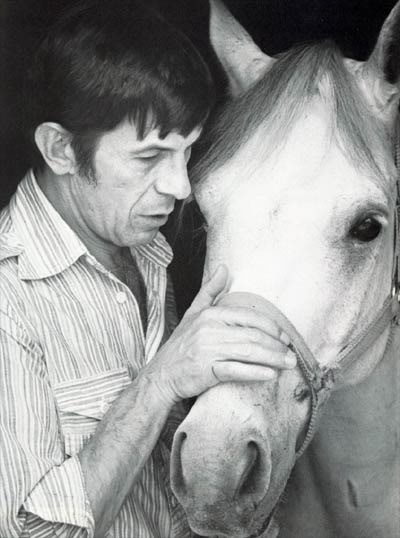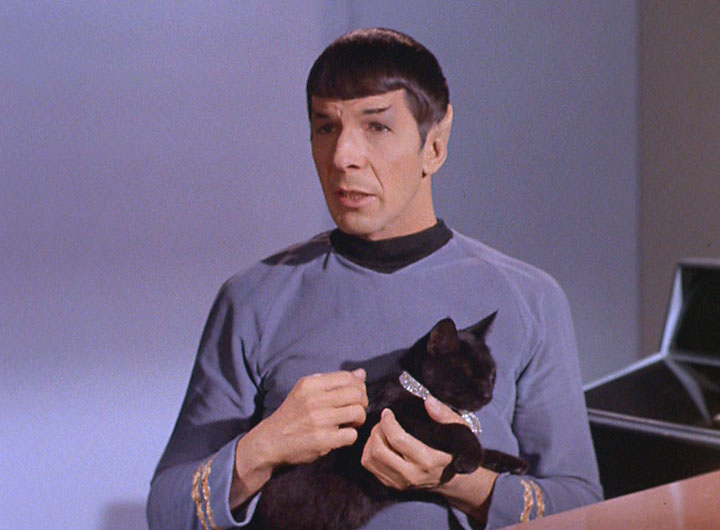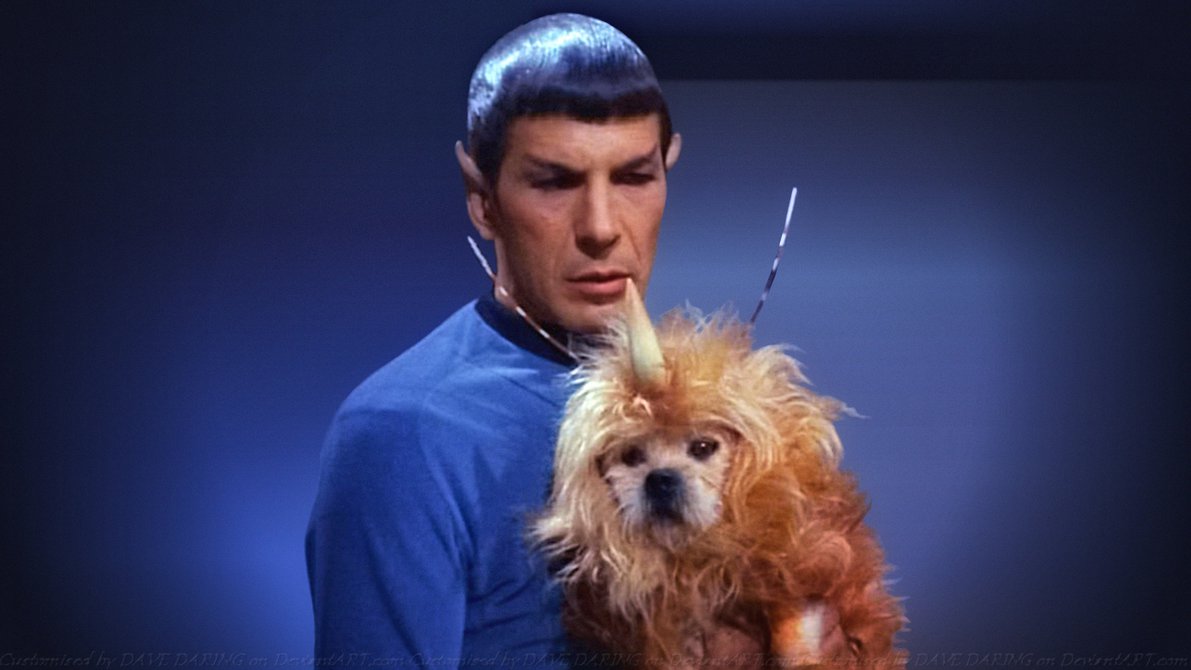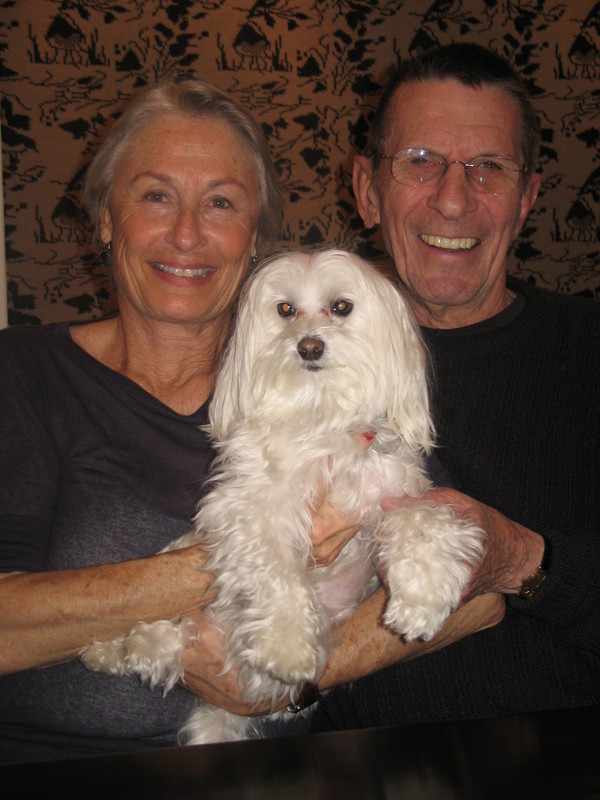
One of the many decorations that greeted fans at Creation’s annual Star Trek convention in Las Vegas, Nevada.
In William Shatner’s hour long documentary Get A Life, fans of Star Trek relive the experience of their fandom and give non-fans a glimpse into what it is like to be a part of the worldwide Star Trek family. The film focuses on the essence of being a fan of Star Trek and emphasizes that while some people paint or build Lego structures for a hobby, Trek fans immerse themselves in the various incarnations of the show for the same reasons those painters paint or the builders build.
The general consensus about this particular fandom is one we are all familiar with; Star Trek is a franchise that tells us we are all accepted for who we are and that no matter what happens now, we have a chance at a brighter tomorrow if we all pull together in that unity of mutual respect and understanding. The documentary goes deeper than this, though, highlighting fans who have chosen careers, made friends, or found spouses because of their love for the show and what it means to them. I, myself, have a group of friends who are more of a family to me, and though we bonded because of our love for theatre and the arts, we met over time at various Star Trek conventions around the globe. It always amazes me to be sitting at lunch with these people from all walks of life and think that we would never have known each other if it were not for Star Trek.
Robert Walter, president of the Joseph Campbell Foundation explains in Shatner’s documentary that humans are hardwired for narrative and want to find a way to make sense of our experiences in story, the way Star Trek does. “The shows that really endure and that have this kind of rabid fandom, they speak to the human experience, and hopefully with enough variation that wherever you are you can find a way in. They speak about a society that doesn’t exclude you. They’re set in some kind of cosmological field that you don’t turn it on and go, ‘Oh, that’s ridiculous,'” he explains to Shatner in the documentary. We all expect fans to see a hero and model themselves after the hero, but according to Walter, there is much more happening when the costumes are in play. “What they are doing is what a practicing Christian in the Renaissance might have done when they adopted a patron saint for their confirmation and took on that saint’s name, and then used that saint as a touchstone for their behavior down the line.”
Get A Life discusses, in various ways, something even non-fans are familiar with: attending an event in costume. For the most part, when you meet people at a convention and ask why they dress as a Klingon or Borg, they will say they do it because it is fun, or because they are really quiet people who get to live another life when playing the character they have chosen. Some will say it is an outlet for emotion or a way for them to suddenly become comfortable in a crowd. Others will tell you it is a means of finding self-validation, while some will say they are doing it for the prize money awarded at the costume contest. (You’ve got to pay for those gold tickets somehow.) No matter what the reason they chose to wear their various uniforms or versions of alien makeup, most fans who attend in character will tell you they wouldn’t ever consider going to a Star Trek Convention in just a t-shirt and jeans, like many fans do.
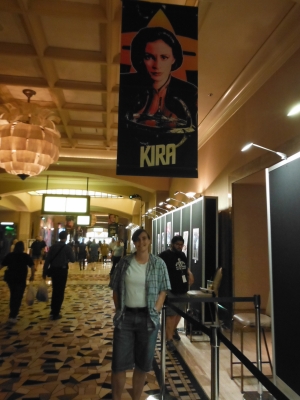
Author, Mirrani (sporting the standard shirt and jeans attire) standing under one of the banners at Creation Entertainment’s annual Las Vegas convention.
I was giving this a lot of thought as I was packing my bags to head to Creation’s Star Trek convention in Las Vegas at the beginning of August. Memories of various events came to me and I recalled familiar faces from all of the years I had attended in the past. I remembered certain people who would be guaranteed to appear in particular costumes, but I also recalled the image of a man taking his three miniature poodles around the convention, each dressed in a classic Starfleet uniform. This image blended with my memory of the documentary when it showed those same dogs being included as “uniformed fans” so that they were able to attend the record breaking gathering of fans in costume at the 45th anniversary convention; the first time the event was held at the Rio Hotel and Casino. All of those things combined to bring up one question in my mind. I knew why people dressed up for the event, but why did the dogs?
With notebook in hand, I headed to the event area and the first person I met was a friend of mine who works for Creation. He was set up at the entrance and was helping attendees find where to go for tickets and registration. At this station he had seen several animals in costume and had described them to me. Finding them in a wall-to-wall crowd of countless Star Trek fans was not an easy task and I know I missed quite a few four legged attendees, but I did manage to talk with two humans about their dressed up dogs.
First, I met Kat Mac Kenzie (of Katy Mac Kreations) and her dog Sabrina, who was wearing a stunning, hand-made TNG era Starfleet uniform, complete with insignia pin pocket, which was backed with quilting for comfort and protection. Sabrina’s costume was so well made that fans began telling Mac Kenzie that she should create uniforms to sell. “I am considering selling vests, but I am only in the beginning stages,” she told me. Putting together costumes like Sabrina’s takes a lot of thought and time, and there are plenty of logistics that have to be worked out such as what materials to use and how to make an accurate dog sizing chart, but Kat was thinking positively about moving forward with it all. In our more recent communications, she has confirmed that she is moving ahead with these plans. “I should have a few mock vests/dog jackets made in a couple of weeks. It is my primary crafting project; I have a sizing guide set up and am looking for venues to launch an online platform.”
At the convention I asked why she chose the TNG uniform for Sabrina. “Last year was our first convention here and after that experience I wanted to make a cooler, lightweight vest that would be more comfortable for all the walking. I thought why not make it something Star Trek?” I WAS surprised by the fan response, however. Mac Kenzie said that few fans understood why she chose the teal uniform of the medical field. “They keep asking me, ‘Why not make it red?’ and I have to tell them, ‘She is a medical alert dog. She should be in blue.'” I have to say that as I was taking Sabrina’s picture, I thought the teal of the medical uniform was the perfect choice for her all around.

Asimov poses at the entrance to Quark’s Bar. For this convention he adds a Star Trek cap to his service dog attire.
After spending an hour or two peering around swarms of moving legs and experiencing the ups and downs of falsely identifying several rolling bags as four legged critters, I ran into Lisa Mueller (of celebrityentertainment.org) and her dog, Asimov, sitting outside of Quark’s Bar. Asimov’s outfit was simple but stunning; a blue hat, made by Lisa, to which she had added the original series Star Trek patch. Having worked in and out of the Star Trek franchise since the late 1980’s, Mueller and Asimov both attended the premiere of Star Trek Renegades, which she said was an honor. For that occasion Asimov wore his brand new hat and when the convention came around, he had an excellent opportunity to wear it again.
Lisa and I also talked about how service animals react in public spaces and how they interact with each other at these events. I asked about the service vest versus the hat. If Asimov recognizes that the vest is on and that means he is working, does he also behave differently when the hat is on? “Yes I think so,” Lisa said, “Another good example would be when he wears his Mickey hat at Disneyland. He often prances because he realizes he’s getting more attention than usual.”

Asimov sports his Mickey Mouse ears at Disneyland in Anaheim, California. Photo courtesy of Lisa Mueller.
I had posed a similar question to Kat Mac Kenzie as I watched Sabrina keep a quiet eye on the crowd that passed us while we talked. Mac Kenzie’s answer came in two parts, the first of which was simple; no matter what Sabrina is wearing, she was always quietly attentive. “She likes to keep an eye out for me,” Kat said. The rest of her answer takes a little bit of explaining. Across from us was a pile of sound-activated tribbles, which provided the backdrop for the rest of the story. Imagine walking past a display of round fuzzy creatures and seeing a dog in costume, playing with them. “At first I wasn’t sure how she would react to the tribbles, but she started playing after a while. Soon she was throwing them up in the air for herself. It became a show for all the fans.”
When I heard that this was not the only costume vest that Sabrina owned, I asked how she responded to the various items. Did she act differently in one costume over another? Did she have a favorite? “She doesn’t like pompoms,” Mac Kenzie told me. “I think because they poke her or get in her way. We never force her to wear an outfit, we let her sniff it and check it out first. Sometimes, when she first wears it, she will shake a little and get used to it that way.” These trial and error introductions were how Sabrina let Kat know she was not a fan of large tutus and that smaller costumes and vests were best.
As the convention wound down and I packed up to go home, I thought about the new friends I had made while writing up this article. I contemplated the costumes and thought about people I had talked to about meeting service animals. Not surprisingly, a lot of people remembered meeting the animals, but didn’t see them as dogs on the job, only as animals in costume. During our interview, Mac Kenzie admitted to me that Sabrina watches Star Trek with her, and I can certainly believe that because (as regular readers of my articles know) our rat North would not ever miss an episode of Sleepy Hollow or Hell on Wheels. Looking back at my weekend, with all of this in mind, I can’t help thinking that the gentleman and his three dogs had it right. Maybe these guys really should count as uniformed fans and not just animals dressed up for an occasion.
Mirrani Houpe, our Small Animal Editor, has had rats since she took home her first little boy once they both completed the second grade. Since that time she has owned, rescued and bred many kinds of rats, from many backgrounds. She may not be a vet, psychology major, or scientist, but her babies have her very well trained when it comes to how to care for them. She is constantly working with her family’s veterinarian to come up with new and innovative ways to love and care for the most often misunderstood rodent in the pet world. You can e-mail her at mirrani@yourpetspace.info
Get A Life, An EPIX Original documentary directed by William Shatner, is available here.
Mirrani would like to thank Kat Mac Kenzie for her time spent talking about Service Dogs and fandom, both in Vegas and through messages afterward. She would also like to thank Lisa Muller for her part in making sure everything was just how it should be in the final draft of this article. Finally, a shout out must be sent to Max Grodénchik (Rom of Star Trek: Deep Space Nine) and his wife Carina, who helped contribute to some of this through an email interview that never got quoted, but did have an impact on what is contained within these paragraphs. If anyone would like to see Max work live, he and the rest of the Rat Pack will be performing at Creation’s 50th anniversary conventions next year.

